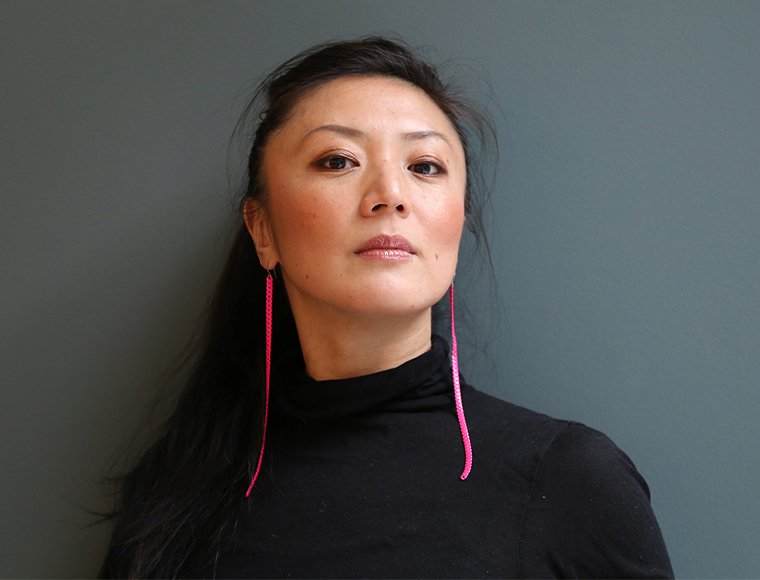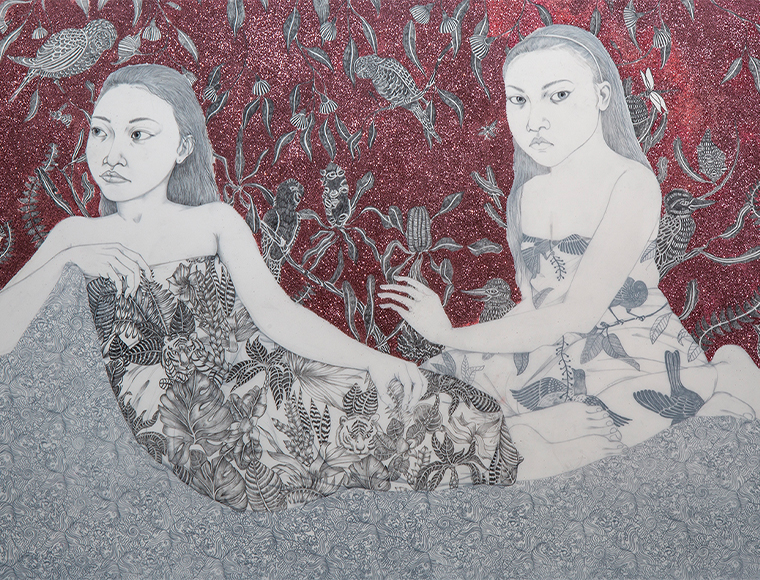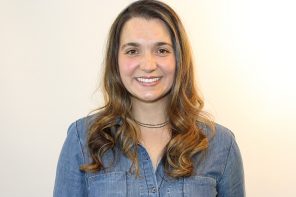“So where are you from?” “No, really, where are you from?”
They are questions that belie the answer “I’m from here,” that actually ask, “Who are you?”
Fay Ku, who has heard these questions many times before, has many answers for the latter. She’s a woman; an artist; an art teacher (at Pratt Institute in Brooklyn where she did her graduate studies); a wife (to composer-instrumentalist Mick Rossi, who’s worked with Paul Simon and Philip Glass); a New York City resident who adores her adopted hometown for its diversity; a baseball fan; and a shrewd poker player who enjoys beating the guys at their own game.
She’s also a Chinese-American who understands what it is to be in a place where no one looks like you, where no on is like you, to be a bridge between two worlds, one East and one West, belonging to both and, perhaps in some people’s eyes, belonging to neither.
Her work — shown recently in the Pelham Art Center’s “Domestic Brutes” show — is part of a trend among women artists to address the way women have been objectified in art by reimagining them in some of the world’s masterworks. It is a response to what British feminist film critic Laura Mulvey called the objectifying “male gaze.” For Ku, whose works echo Édouard Manet and Paul Gauguin, this idea of the female gaze is “a wonderful recent movement that draws attention to women, and it’s about time.” (See also our story on artist Kathleen Gilje, Page30). But it’s more than that.
“I can’t separate the female gaze from the East Asian gaze,” Ku says. “Everyone sees from their point of view, an internal viewpoint.”
Bridging East and West
When Ku looks out, she sees through the eyes of a Chinese-American gazing at a Chinese-American face that has not always been reflected in the West generally and America specifically. Her mixed media works seek in part to recalibrate this. Her “New Olympia” (2019, graphite and oil paint on translucent drafting film) — seen in the Pelham Art Center show — replaces Manet’s sleek nude white courtesan and Black servant in “Olympia” (1863, oil on canvas) with two Asian women in sarongs. They’re in the same physical position as Manet’s subjects but not the same social one. They’re equals.
Ku’s “The Jungle Has Eyes” (2019, graphite, oil paint and glitter on cut and layered translucent drafting film) evokes the intimacy of the women in Paul Gauguin’s “Barbarian Tales” (1902, oil on canvas). But the backdrop is vastly different, with eyes like so many peacock feathers.
Seeing and being seen — a motif throughout art history but especially of Modernism and a preoccupation of the digital age — is key to Ku’s work. In “See What You Do” (2008, graphic, watercolor and gouache on paper), a woman dressed in a vivid, peacock-feathered gown covers her eyes in a forest of silver birch trees, whose distinctive markings are known as “eyes.” It’s a metaphor for the way many women feel — seen but not seeing and faceless. It tells us something about Ku’s own story.
Her family fled the Cultural Revolution on mainland China to Taiwan, where she was born, then moved about the United States as her father, who ultimately created a software company that did work for NASA and other organizations, pursued his academic studies. In Oklahoma, Texas and Colorado, where she grew up before the family settled in Maryland, there weren’t many people, if any, who looked like her.
The Chinese are a people for whom family is of the utmost importance. Each person knows his place in the family, honoring the elders and ancestors. The oldest son is expected to care for the parents in old age, which is why primacy is given to having a boy. The fact that she was “female and not important,” in Ku’s words, ironically worked in her favor, allowing her to do what she wanted to do and study art at Bennington College in Vermont. But it wasn’t until graduate school that she found herself as an artist.
“I think for whatever reason, it took me a long time to be political, a long time,” she says. “I grew up in an era where it was not cool to be different. I think it’s great that youth today appreciate diversity. I had a very odd, isolated childhood.”
Staying in the game
She credits her Pratt professors with bringing out what was inside of her, what she saw in her dreams. That and New York, with its infinite variety. “I couldn’t live anywhere else,” she says. And though she’d like to go back to Taiwan to perfect her Mandarin or to Paris for her French, she says, “New York is my hometown in the way no place else is.”
There she teaches freshman and thesis drawing to seniors. The pandemic has meant extra work, something she is both guilty about and grateful for at a moment when so many others have lost their jobs.
This brings her to baseball — a sport she came to listen to for the background noise and then got hooked on — and to poker, a game in which she has taken many a man’s laundry quarters. Sports and games require skill and luck and the best don’t always win while the less-than-great sometimes get a good hand or make the best of a bad one. Like the poker-playing psychologist Maria Konnikova, author of the provocative “The Biggest Bluff,” “The Biggest Bluff: How I learned to Pay Attention, Master Myself and Win,” Ku believes that luck needs a little push, which is where skill — and persistence — come into play.
“When you play well, you put yourself in a position where you can capitalize on a good hand,” Ku says. “You have to keep working to put yourself in a position where you can capitalize on luck.”
For more, visit fayku.com.






